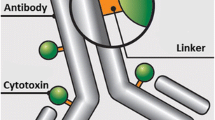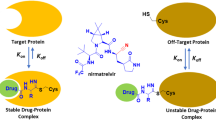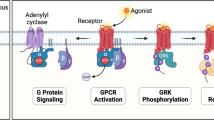Abstract
Extracellular peptide ligand binding sites, which bind the N-termini of angiotensin II (AngII) and bradykinin (BK) peptides, are located on the N-terminal and extracellular loop 3 regions of the AT1R and BKRB1 or BKRB2 G-protein-coupled receptors (GPCRs). Here we synthesized peptides P15 and P13 corresponding to these receptor fragments and showed that only constructs in which these peptides were linked by S–S bond, and cyclized by closing the gap between them, could bind agonists. The formation of construct-agonist complexes was revealed by electron paramagnetic resonance spectra and fluorescence measurements of spin labeled biologically active analogs of AngII and BK (Toac1-AngII and Toac0-BK), where Toac is the amino acid-type paramagnetic and fluorescence quencher 2, 2, 6, 6-tetramethylpiperidine-1-oxyl-4-amino-4-carboxylic acid. The inactive derivatives Toac3-AngII and Toac3-BK were used as controls. The interactions characterized by a significant immobilization of Toac and quenching of fluorescence in complexes between agonists and cyclic constructs were specific for each system of peptide-receptor construct assayed since no crossed reactions or reaction with inactive peptides could be detected. Similarities among AT, BKR, and chemokine receptors were identified, thus resulting in a configuration for AT1R and BKRB cyclic constructs based on the structure of the CXCR4, an α-chemokine GPCR-type receptor.






Similar content being viewed by others
References
Barany G, Merrifield RB (1980) In: The peptides. Analysis, synthesis and biology. Academic Press, New York
Barbosa SR, Cilli EM, Lamy-Freund MT, Castrucci AML, Nakaie CR (1999) First synthesis of a fully active spin-labeled peptide hormone. FEBS Lett 445:425–428
Cannon B, Polnaszek CF, Butter KW, Eriksson LEG, Smith ICP (1975) The fluidity and organization of mitochondrial membrane lipids of the Brown adipose tissue of cold-adapted rats and hamsters as determined by nitroxide spin probes. Arch Bioch Bioph 167:505–518
Cherezov V, Rosenbaum DM, Hanson MA, Rasmussen SG, Thian FS, Kobilka TS, Choi HJ, Kuhn P, Weiss WI, Kobilka BK, Stevens RS (2007) High-resolution crystal structure of an engineered human beta2-adrenergic g-protein-coupled receptor. Science 318:1258–1265
Cilli EM, Marchetto R, Schreier S, Nakaie CR (1999) Correlation between the mobility of spin labeled peptide chains and resin solvation: an approach to optimize the synthesis of aggregating sequences. J Org Chem 64:9118–9123
Correa SA, Graciela C, Pignatari GC, Ferro ES, Pacheco NAS, Costa-Neto CM, Pesquero JB, Oliveira L, Paiva ACM, Shimuta SI (2006) Role of the Cys18-Cys274 disulfide bond and of the third extracellular loop in the constitutive activation and internalization of angiotensin II type 1 receptor. Regul Pept 134:132–140
Costa-Neto CM, Miyakawa AA, Oliveira L, Hjorth SA, Schwartz TW, Paiva ACM (2000) Mutational analysis of the interaction of N- and C-terminal ends of angiotensin II with the AT1 receptor. Br J Pharmacol 130:1263–1268
Daley DO (2008) The assembly of membrane proteins into complexes. Curr Opin Struct Biol 18:420–424
Dupeyre RM, Lemaire H, Rassat A (1964) Nitroxydes (VII): radicaux libres stables pyrrolidiniques. Tetrahedron Lett 27:1781–1785
Fasman GD (1996) Circular dichroism and the conformational analysis of biomolecules. Plenum Press, New York
Feng YH, Noda K, Saad Y, Liu XP, Husain A, Karnik SS (1995) The docking of Arg2 of angiotensin II with Asp281 of AT1 receptor is essential for full agonism. J Biol Chem 270:12846–12850
Fields GB, Noble RL (1990) Solid phase peptide synthesis utilizing 9-fluorenylmethoxycarbonyl amino acids. Int J Pept Prot Res 35:161–214
Franzoni L, Nicastro G, Pertinhez TA, Tato M, Nakaie CR, Paiva ACM, Schreier S, Spisni A (1997) Solution structure of the C-terminal fragment 300–320 of rat angiotensin II AT1A receptor by CD, 1H 2D-NMR and MD calculations. J Biol Chem 272:9734–9741
Grishin NV (2001) Fold change in evolution of protein structures. J Struct Biol 134:164–185
Hjorth SA, Schambye HT, Greenlee WJ, Schwartz TW (1994) Identification of peptide binding residues in the extracellular domains of the AT1 receptor. J Biol Chem 269:30953–30959
Janin J, Chothia C (1985) Domains in proteins: definitions, location, and structural principles. Meth Enzymol 115:420–440
Karim CB, Kirby TL, Zhang Z, Nesmelov Y, Thomas DD (2004) Proc Nat Acad Sci 101:14437–14442
Kates SA, Albericio F (2000) Solid phase peptide synthesis In: Solid phase synthesis. A practical guide, M. Dekker, Inc., New York, USA, pp 275–330
Kivelson D (1964) Theory of nuclear hyperfine broadening of ESR lines in Liquids. J Chem Phys 41:1904–1909
Le MT, Vanderheyden PM, Szaszak M, Hunyady L, Vauquelin G (2002) Angiotensin IV is a potent agonist for constitutive active human AT1 receptors. Distinct roles of the N- and C-terminal residues of angiotensin II during AT1 receptor activation. J Biol Chem 277:23107–23110
Li J, Edwards PC, Burghammer M, Villa C, Schertler GF (2004) Structure of bovine rhodopsin in a trigonal crystal form. J Mol Biol 343:1409–1438
Lopes DD, Poletti EF, Vieira RFF, Jubilut GN, Oliveira L, Paiva ACM, Schreier S, Nakaie CR (2008) A proposed approach to evaluating agonist binding site of a peptide receptor. Int J Pept Res Ther 14:121–126
Malavolta L, Poletti EF, Silva EH, Schreier S, Nakaie CR (2008) Application of the electron paramagnetic resonance spectroscopy for validation of the novel (AN + DN) solvent polarity scale. Int J Mol Sci 9:1321–1332
Marceau F, Regoli D (2004) Bradykinin receptors ligands: therapeutic perspectives. Nature 3:845–852
Marchetto R, Schreier S, Nakaie CR (1993) A novel spin-labeled aminoacid derivative for use in peptide synthesis: (9-fluorenylmethyloxycarbonyl) 2,2,6,6-tetramethylpiperidine-N-oxyl-4-amino-4-carboxylic acid. J Am Chem Soc 115:11042–11043
Marchetto R, Cilli EM, Jubilut GN, Schreier S, Nakaie CR (2005) Determination of site–site distance and site concentration within polymer beads: a combined swelling-electron paramagnetic resonance study. J Org Chem 70:4561–4568
Marsh D, Jost M, Peggion C, Toniolo C (2007) TOAC spin labels in the backbone of alamethicin: EPR studies in lipid membranes. Biophys J 92:4002–4011
Marzin AG, Lesk AM, Chothia C (1994) Principles determining the structure of beta-sheet barrels in proteins.I. A theoretical analysis. Mol Biol 236:1369–1381
Nakaie CR, Goissis G, Schreier S, Paiva ACM (1981) pH dependence of ESR spectra of nitroxide containing ionizable groups. Braz J Med Biol Res 14:173–180
Nakaie CR, Silva EG, Cilli EM, Marchetto R, Schreier S, Paiva TB, Paiva ACM (2002) Synthesis and pharmacological properties of TOAC-labeled angiotensin and bradykinin analogs. Peptides 23:65–70
Noda K, Saad Y, Karnik SS (1995) Interaction of Phe8 of angiotensin II with Lys199 and His256 of AT1 receptor in agonist activation. J Biol Chem 270:28511–28514
Oliveira E, Cilli EM, Miranda A, Jubilut GN, Albericio F, Andreu D, Paiva ACM, Schreier S, Tominaga M, Nakaie CR (2002) Monitoring the chemical assembly of a transmembrane bradykinin receptor fragment: correlation between resin solvation, peptide chain mobility and rate of coupling. Eur J Org Chem 21:3686–3694
Oliveira L, Costa-Neto CM, Nakaie CR, Schreier S, Shimuta SI, Paiva ACM (2007) The angiotensin II AT1 receptor structure-activity correlations in the light of rhodopsin structure. Physiol Rev 87:565–592
Palczewski K, Kumasaka T, Hori T, Behnke CA, Motoshima H, Fox BA, Le Trong I, Teller DC, Okada T, Stenkamp RE, Yamamoto M, Miyano M (2000) Crystal structure of rhodopsin: a G-protein-coupled receptor. Science 289:739–745
Pertinhez TA, Nakaie CR, Paiva ACM, Schreier S (1997) Spin-labeled extracellular loop from a seven-transmembrane helix receptor studies in solution and interaction with model membranes. Biopolymers 42:821–829
Pispisa B, Mazzuca C, Palleschi A, Stella L, Venanzi M, Wakselman M, Mazaleyrat JP, Rainaldi M, Formaggio F, Toniolo C (2003) A combined spectroscopic and theoretical study of a series of conformationally restricted hexapeptides carrying a rigid binaphthyl-nitroxide donor-acceptor pair. Chem Eur J 9:4084–4093
Rassat A, Rey P (1967) Nitroxides. 23. Preparation of aminoacid free radicals and their complex salts. Bull Soc Chem Fr 3:815–817
Salinas RK, Shida CS, Pertinhez TA, Spisni A, Nakaie CR, Paiva ACM, Schreier S (2002) Trifluoroethanol and binding to model membranes stabilize a predicted turn in a peptide corresponding to the first extra-cellular loop of the angiotensin II AT1 receptor. Biopolymers 65:21–31
Schreier S, Barbosa SR, Casallanovo F, Vieira RFF, Cilli EM, Paiva ACM, Nakaie CR (2004) Conformational basis for the biological activity of Toac-labeled angiotensin II and bradykinin: electron paramagnetic resonance, circular dichroism and fluorescence studies. Biopolymers 74:389–402
Schreier S, Bozelli JC Jr, Marin N, Vieira RFF, Nakaie CR (2012) The spin label amino acid TOAC and its uses in studies of peptides—chemical, physicochemical, spectroscopic, and conformational aspects. Biophys Rev 4:45–66
Shafer AM, Nakaie CR, Deupi X, Bennet VJ, Voss JC (2008) Characterization of a conformationally sensitive TOAC spin-labeled substance P. Peptides 29:1919–1929
Smythe ML, Nakaie CR, Marshall GR (1995) Alpha-helical versus 3(10)-helical conformation of alanine-based peptides in aqueous solution: an electron spin resonance investigation. J Am Chem Soc 117:10555–10562
Toniolo C, Valente E, Formaggio F, Crisma M, Pilloni G, Corvaja C, Toffoletti A, Martinez GV, Hanson MP, Millhauser GL, George C, Flippen-Anderson JL (1995) Synthesis and conformational studies of peptides containing TOAC, a spin-labeled Cα,α-disubstituted glycine. J Pept Sci 1:45–57
Toniolo C, Crisma M, Formaggio F (1998) TOAC, a nitroxide spin-labeled achiral Cα-tetrasubstituted α-amino acid is an excellent tool in material science and biochemistry. Biopolymers 47:153–158
Van Eps NV, Anderson LL, Kisselev OG, Baranski TJ, Hubbell WL, Marshall GR (2010) Electron paramagnetic resonance studies of functionally active, nitroxide spin-labeled peptide analogues of the C-terminus of a G-protein alpha subunit. Biochemistry 49:6877–6886
Venanzi M, Valeri A, Palleschi A, Stella L, Moroder L, Formaggio F, Toniolo C, Pispisa B (2004) Structural properties and photophysical behavior of conformationally constrained hexapeptides functionalized with a new fluorescent analog of tryptophan and a nitroxide radical quencher. Biopolymers 75:128–139
Victor KG, Cafiso DS (2001) Location and dynamics of basic peptides at the membrane interface: electron paramagnetic resonance of tetramethyl-piperidine-N-oxyl-4-amino-4-carboxylic acid-labeled peptides. Biophys J 81:2241–2250
Vieira RFF, Casallanovo F, Marin-Huachaca N, Paiva ACM, Schreier S, Nakaie CR (2009) Conformational properties of angiotensin II and its active and inactive TOAC-labeled analogues in the presence of the micelles. Electron paramagnetic resonance, fluorescence and circular dichroism studies. Biopolymers 92:525–537
Vriend G (1990) WHAT IF: a molecular modeling and drug design program. J Mol Graph 8:526–529
Vroling B, Sanders M, Baackman C, Bormann A, Verhoeven A, Klomp J, Oliveira L, de Vlieg J, Vriend G (2011) GPCRDB: information system for G protein-coupled receptors. Nucleic Acid Res 39:D309–D319. http://www.gpcr.org/7tm/
Wetlaufer DB (1973) Nucleation, rapid folding, and globular intrachain regions in proteins. Proc Natl Acad Sci USA 70:697–701
Wilson EK (2000) A new spin: peptide probe. Chem Eng News 78:54–59
Wu B, Chien EY, Mol CD, Fenalti G, Liu W, Katritch V, Abagyan R, Brooun A, Wells P, Bi FC, Hamel DJ, Kuhn P, Handel TM, Cherezov V, Stevens RC (2010) Structures of the CXCR4 chemokine GPCR with small-molecule and cyclic peptide antagonists. Science 330:1066–1071
Zhang Z, Remmer HA, Thomas DD, Karim CB (2007) Backbone dynamics determined by electron paramagnetic resonance to optimize solid-phase peptide synthesis of TOAC-labeled phospholamban. Biopolymers 88:29–35
Acknowledgments
This research was supported by Fundacao de Amparo à Pesquisa do Estado de Sao Paulo (FAPESP) and Conselho Nacional de Pesquisa Científica e Tecnológica (CNPq). CRN, SS, and SIS are CNPq’ research fellows, RFFV is recipient of FAPESP pos-doctoral fellowship, and DDL is recipient of CNPq PhD fellowship.
Conflict of interest
The authors declare that they have no conflict of interest.
Author information
Authors and Affiliations
Corresponding author
Additional information
Antonio C. M. Paiva: Deceased.
D. D. Lopes, R. F. F. Vieira, and L. Malavolta contributed equally to the manuscript.
Electronic supplementary material
Below is the link to the electronic supplementary material.
Rights and permissions
About this article
Cite this article
Lopes, D.D., Vieira, R.F.F., Malavolta, L. et al. Short peptide constructs mimic agonist sites of AT1R and BK receptors. Amino Acids 44, 835–846 (2013). https://doi.org/10.1007/s00726-012-1405-9
Received:
Accepted:
Published:
Issue Date:
DOI: https://doi.org/10.1007/s00726-012-1405-9




